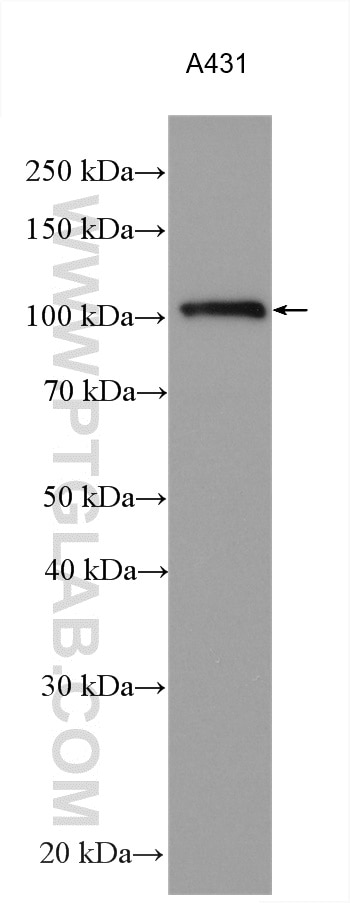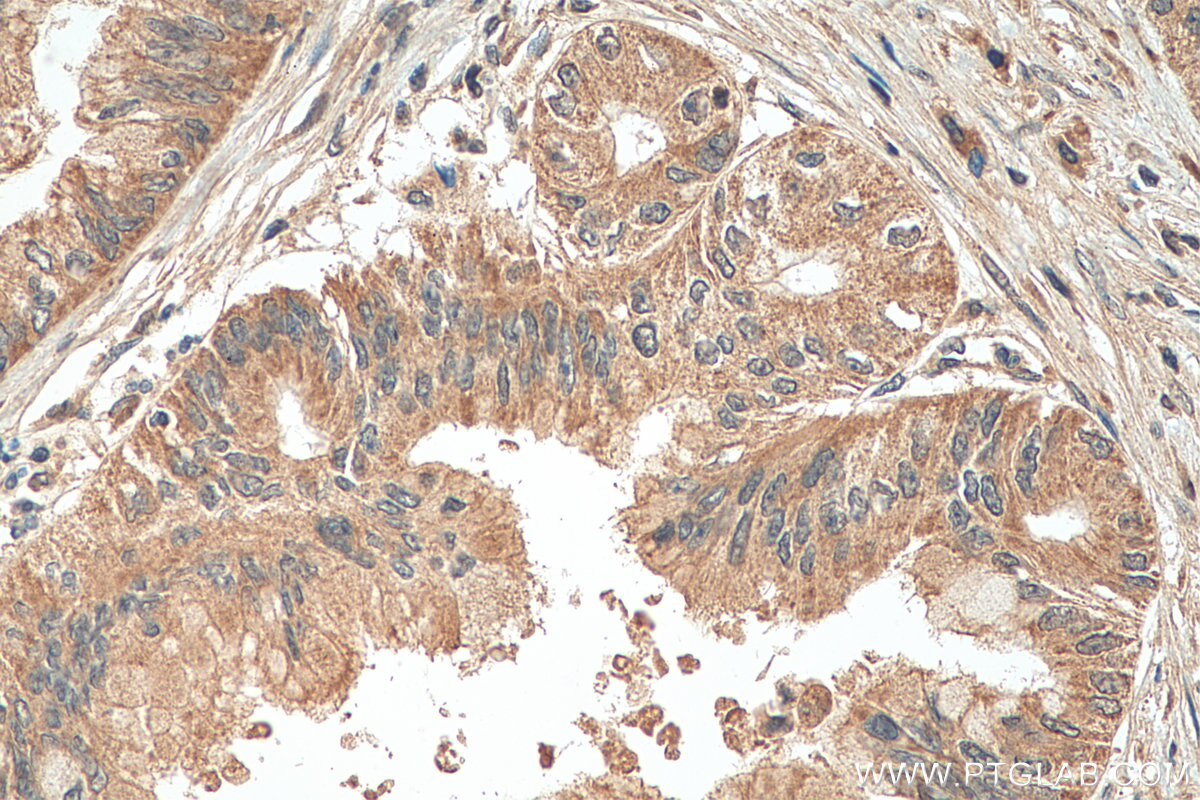- Phare
- Validé par KD/KO
Anticorps Polyclonal de lapin anti-AHR
AHR Polyclonal Antibody for IF, IHC, IP, WB, ELISA
Hôte / Isotype
Lapin / IgG
Réactivité testée
Humain, souris
Applications
WB, IP, IHC, IF, ChIP, ELISA
Conjugaison
Non conjugué
N° de cat : 28727-1-AP
Synonymes
Galerie de données de validation
Applications testées
| Résultats positifs en WB | cellules A431, cellules HepG2 |
| Résultats positifs en IP | cellules PC-3, cellules HepG2 |
| Résultats positifs en IHC | tissu d'intestin grêle de souris, tissu de cancer du pancréas humain il est suggéré de démasquer l'antigène avec un tampon de TE buffer pH 9.0; (*) À défaut, 'le démasquage de l'antigène peut être 'effectué avec un tampon citrate pH 6,0. |
| Résultats positifs en IF | cellules HepG2, |
Dilution recommandée
| Application | Dilution |
|---|---|
| Western Blot (WB) | WB : 1:2000-1:10000 |
| Immunoprécipitation (IP) | IP : 0.5-4.0 ug for 1.0-3.0 mg of total protein lysate |
| Immunohistochimie (IHC) | IHC : 1:50-1:500 |
| Immunofluorescence (IF) | IF : 1:50-1:500 |
| It is recommended that this reagent should be titrated in each testing system to obtain optimal results. | |
| Sample-dependent, check data in validation data gallery | |
Applications publiées
| WB | See 7 publications below |
| IHC | See 2 publications below |
| IF | See 2 publications below |
| IP | See 1 publications below |
| ChIP | See 1 publications below |
Informations sur le produit
28727-1-AP cible AHR dans les applications de WB, IP, IHC, IF, ChIP, ELISA et montre une réactivité avec des échantillons Humain, souris
| Réactivité | Humain, souris |
| Réactivité citée | Humain, souris |
| Hôte / Isotype | Lapin / IgG |
| Clonalité | Polyclonal |
| Type | Anticorps |
| Immunogène | AHR Protéine recombinante Ag28935 |
| Nom complet | aryl hydrocarbon receptor |
| Masse moléculaire calculée | 848 aa, 96 kDa |
| Poids moléculaire observé | 105-110 kDa |
| Numéro d’acquisition GenBank | BC070080 |
| Symbole du gène | AHR |
| Identification du gène (NCBI) | 196 |
| Conjugaison | Non conjugué |
| Forme | Liquide |
| Méthode de purification | Purification par affinité contre l'antigène |
| Tampon de stockage | PBS avec azoture de sodium à 0,02 % et glycérol à 50 % pH 7,3 |
| Conditions de stockage | Stocker à -20°C. Stable pendant un an après l'expédition. L'aliquotage n'est pas nécessaire pour le stockage à -20oC Les 20ul contiennent 0,1% de BSA. |
Informations générales
The aryl hydrocarbon receptor (AhR) is a ligand-activated transcription factor that has been largely regarded as a mediator of xenobiotic metabolism [PMID:18483242]. It plays a part role in physiologic activities, including attenuation of the acute phase response, cytokine signaling, T helper (TH)17 immune cell differentiation, modulation of NF-κB activity, and regulation of hormonal signaling [PMID:20423157,18540824]. It also mediates transcription factor sequestering away from a gene promoter or tethering of the AhR to a transcription factor on a promoter. AHR calculated molecular masses differ by <10%, compared with the apparent molecular masses predicted from SDS-PAGE for the two receptors (105 and 95 kDa, respectively). (PMID: 8246913)
Protocole
| Product Specific Protocols | |
|---|---|
| WB protocol for AHR antibody 28727-1-AP | Download protocol |
| IHC protocol for AHR antibody 28727-1-AP | Download protocol |
| IF protocol for AHR antibody 28727-1-AP | Download protocol |
| IP protocol for AHR antibody 28727-1-AP | Download protocol |
| Standard Protocols | |
|---|---|
| Click here to view our Standard Protocols |
Publications
| Species | Application | Title |
|---|---|---|
Eur J Med Res Potential 'anti-cancer' effects of esketamine on proliferation, apoptosis, migration and invasion in esophageal squamous carcinoma cells | ||
Int Immunopharmacol Paeoniflorin-6'-o-benzene sulfonate ameliorates the progression of adjuvant-induced arthritis by inhibiting the interaction between Ahr and GRK2 of fibroblast-like synoviocytes. | ||
J Ethnopharmacol Ginsenoside Rg1 protects mice against 2,3,7,8-tetrachlorodibenzo-p-dioxin-induced liver injury by inhibiting CYP1A1 through the aryl hydrocarbon receptor. | ||
Toxicol Res (Camb) High-fat diet and alcohol induced-mice could cause colonic injury through molecular mechanisms of endogenous toxins | ||
Cell Prolif Porphyromonas gingivalis infection promotes inflammation via inhibition of the AhR signalling pathway in periodontitis | ||
Oncol Lett Fenofibrate attenuates the cytotoxic effect of cisplatin on lung cancer cells by enhancing the antioxidant defense system in vitro |









